Lesson summary
Students will understand how regulations and laws help to protect our environment and local communities. Students explore their local areas and test their understanding through scenario-based learning.
Learning intentions:
Students will...
- identify and assess their local environments for current rules and regulations that determine behaviour and change.
Success criteria:
Students can...
- provide examples of places in their local area
- discuss different groups in the local community
- identify rules and guidelines that help us take care of the environment.
Lesson guides and printables
Curriculum links
Select your curriculum from the options below.
Lesson details
Skills
This lesson is designed to build students’ competencies in the following skills:
- creative thinking
- critical thinking
- collaboration
- communication
- cultural understanding
- reflection
- social skills
Curriculum Mapping
Australian Curriculum (v9.0) content description:
Year 1 and 2, HASS (Geography)
- the natural, managed and constructed features of local places, and their location (AC9HS1K03)
- how places change and how they can be cared for by different groups including First Nations Australians (AC9HS1K04)
- how places can be spatially represented in geographical divisions from local to regional to state/territory, and how people and places are interconnected across those scales (AC9HS2K03)
- the interconnections of First Nations Australians to a local Country/Place (AC9HS2K04).
Relevant parts of Year 1 and 2 HASS achievement standards: Students can identify the location and nature of the natural, managed and constructed features of local places, the ways people change, and how they can be cared for by people. They identify the significance of a local person, group, place and/or building. Students identify how people and places are interconnected both at local and broader scales.
NSW Syllabus outcomes:
- describes features of places and the connections people have with places (GE1-1)
- identifies ways in which people interact with and care for places (GE1-2).
General capabilities: Ethical Understanding, Intercultural Understanding, Literacy, Personal and Social Capability
Cross-curriculum priority: Aboriginal and Torres Strait Islander Histories and Cultures, Sustainability
Level of teacher scaffolding: Medium - facilitate class discussion and explicit teaching.
UN Sustainable Development Goals
UN SDG 15: Protect, restore and promote sustainable use of terrestrial ecosystems, sustainably manage forests, combat desertification, and halt and reverse land degradation and halt biodiversity loss
- Target 15.5: Take urgent and significant action to reduce the degradation of natural habitats, halt the loss of biodiversity and, by 2020, protect and prevent the extinction of threatened species.
Resources Required
- Student worksheet (one per student)
- Whiteboard
- Device capable of displaying audiovisual material
Additional Info
This lesson has been developed in partnership with the Conservation Regulator, a government agency responsible for regulation of fire prevention, use of public land, wildlife and biodiversity. Through a combination of enforcement and education activities, the Conservation Regulator aims to maintain the health and heritage of these landscapes for future generations to enjoy.
Related Professional Learning
Using The Cool.org Act Framework in the Classroom - Primary
Quick Summary: This course will help you to empower students to take action on issues that are important to them, by offering a variety of strategies and tactics to facilitate meaningful action.
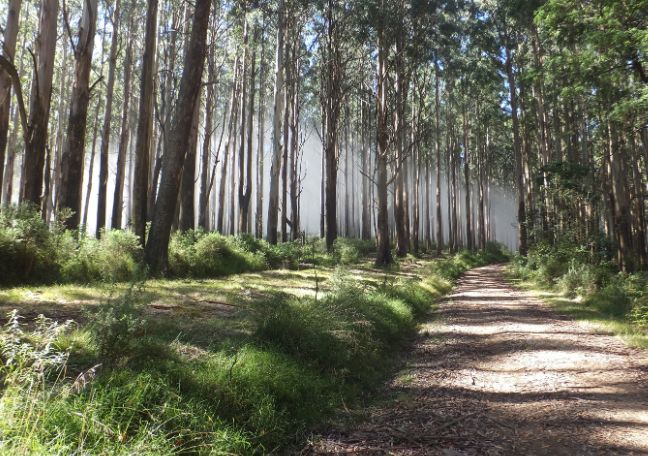
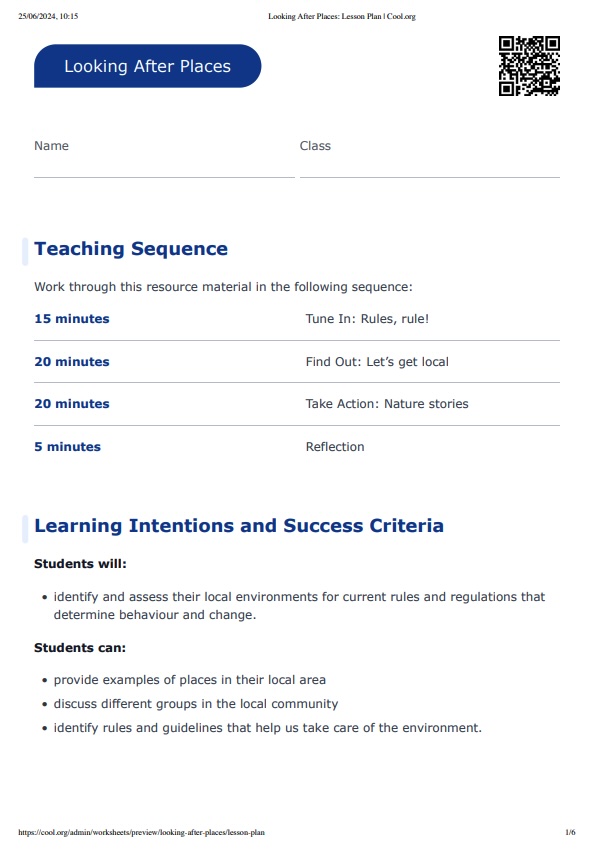
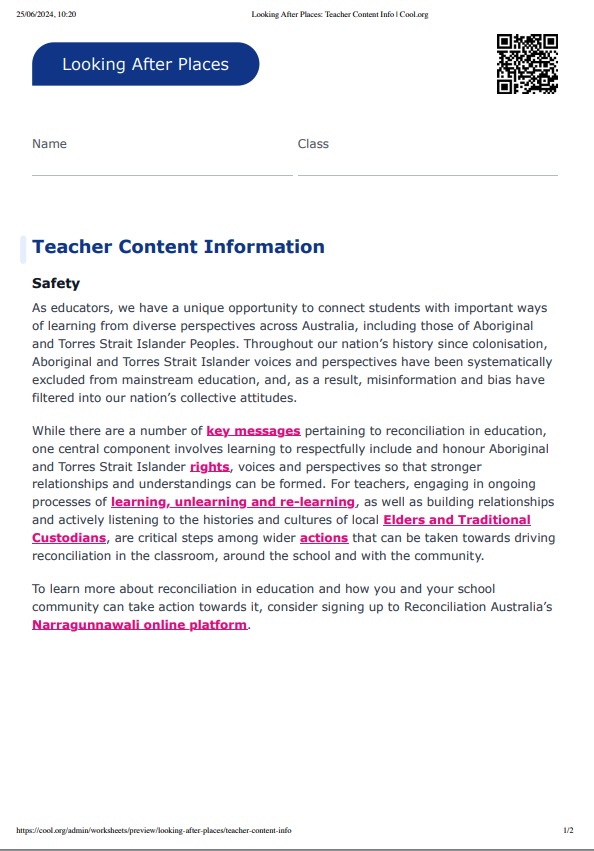
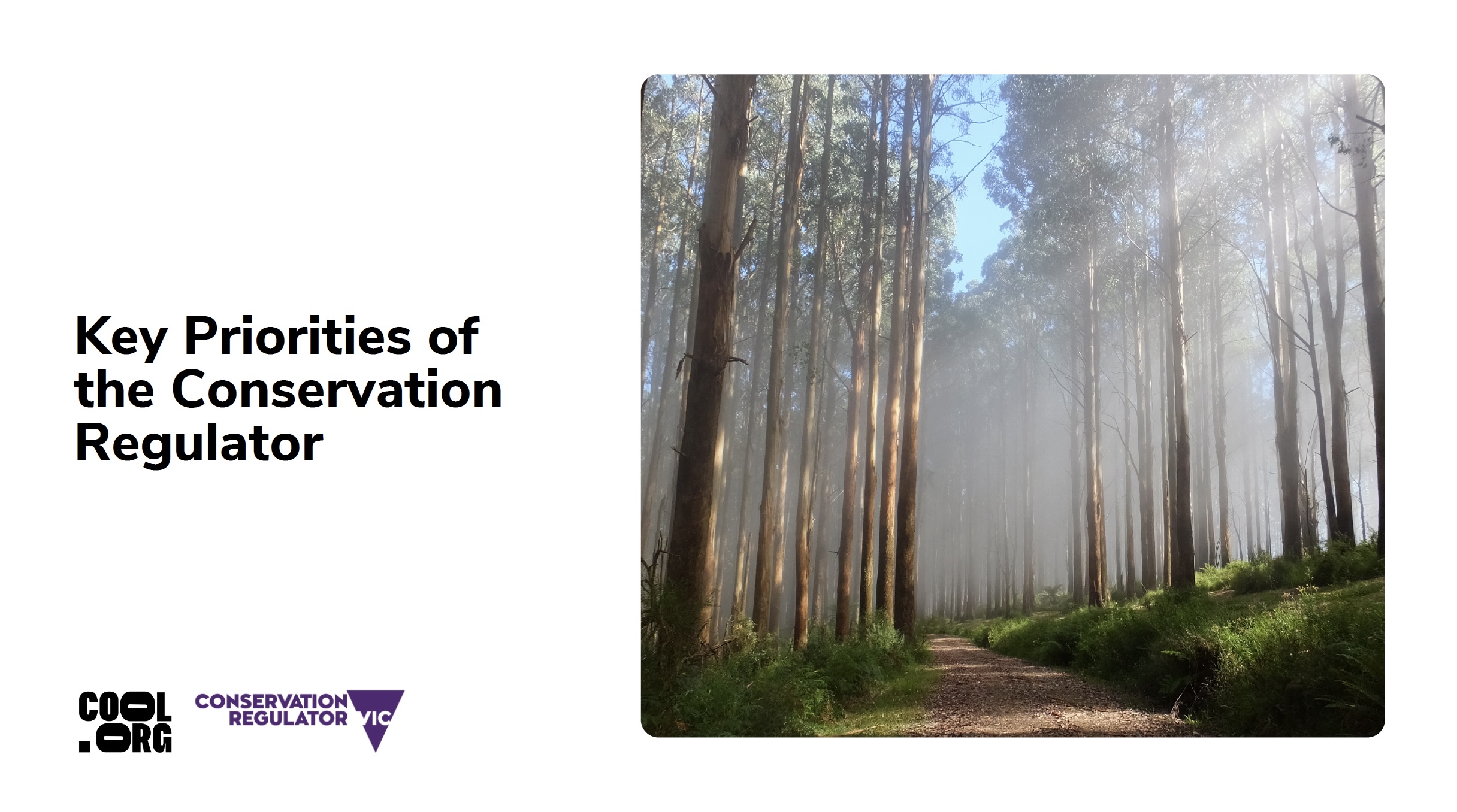
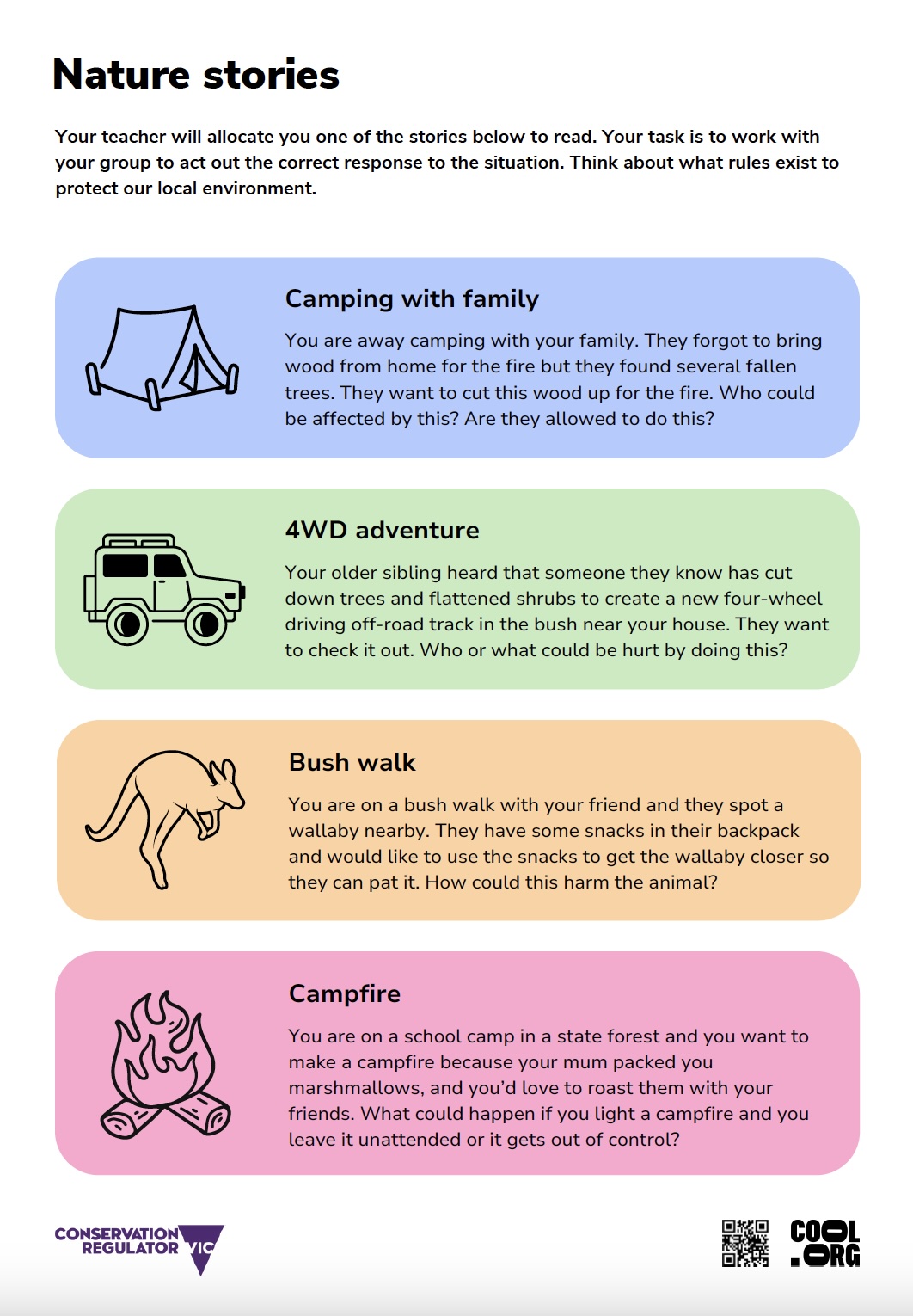
Welcome back!
Don't have an account yet?
Log in with:
Create your free Cool.org account.
Many of our resources are free, with an option to upgrade to Cool+ for premium content.
Already have an account?
Sign up with:
By signing up you accept Cool.org's Terms and Conditions(Opens in new tab) and Privacy Policy(Opens in new tab).